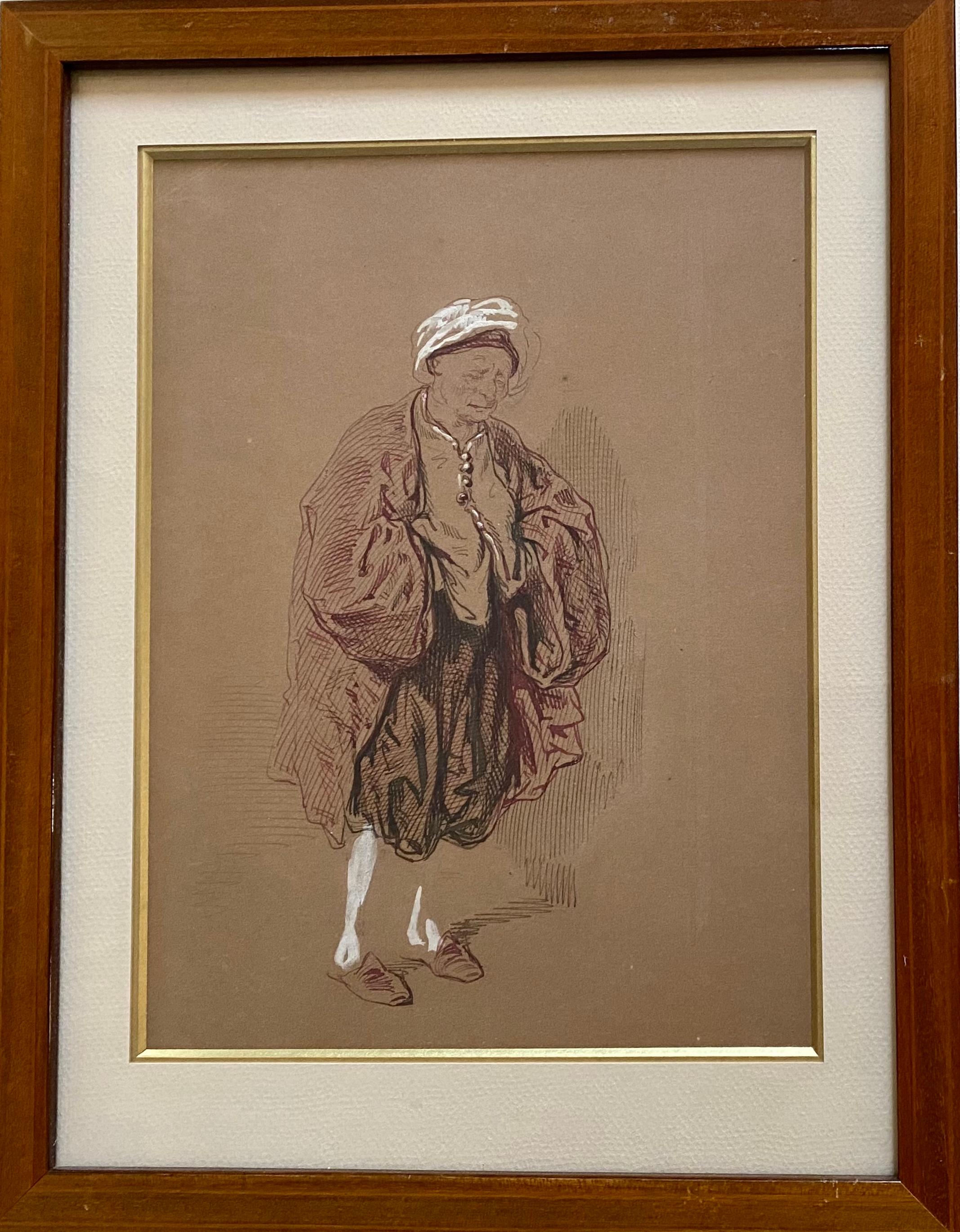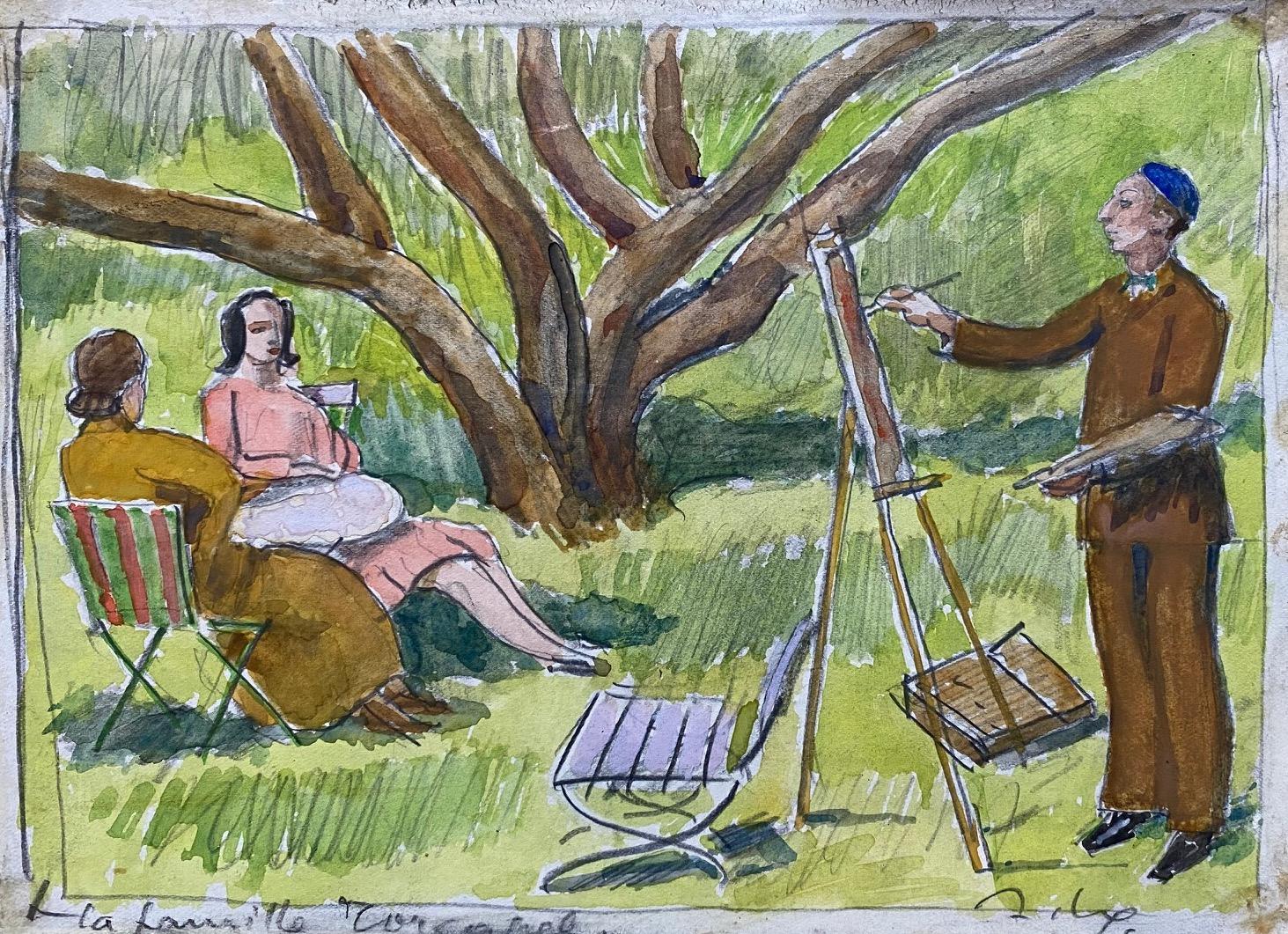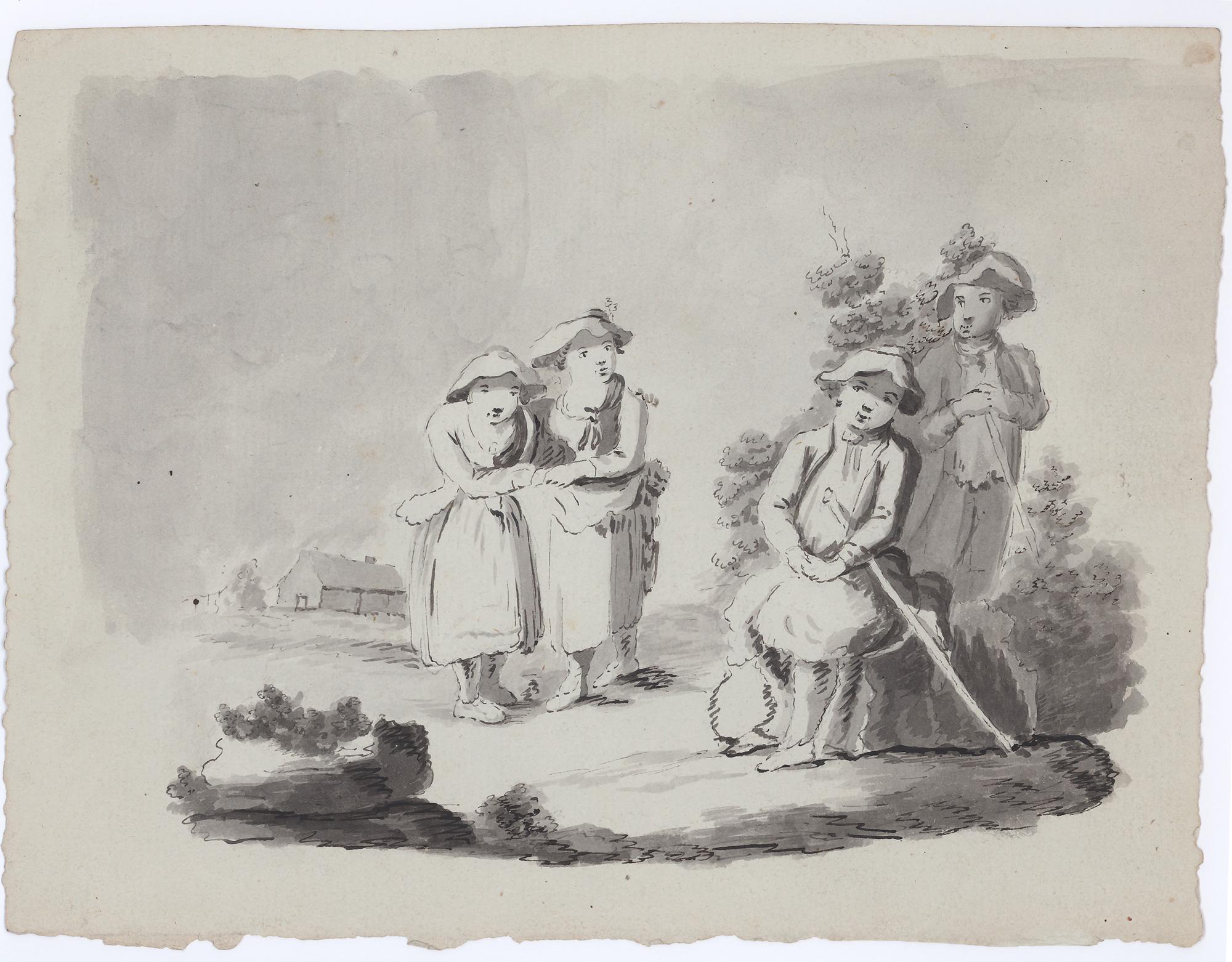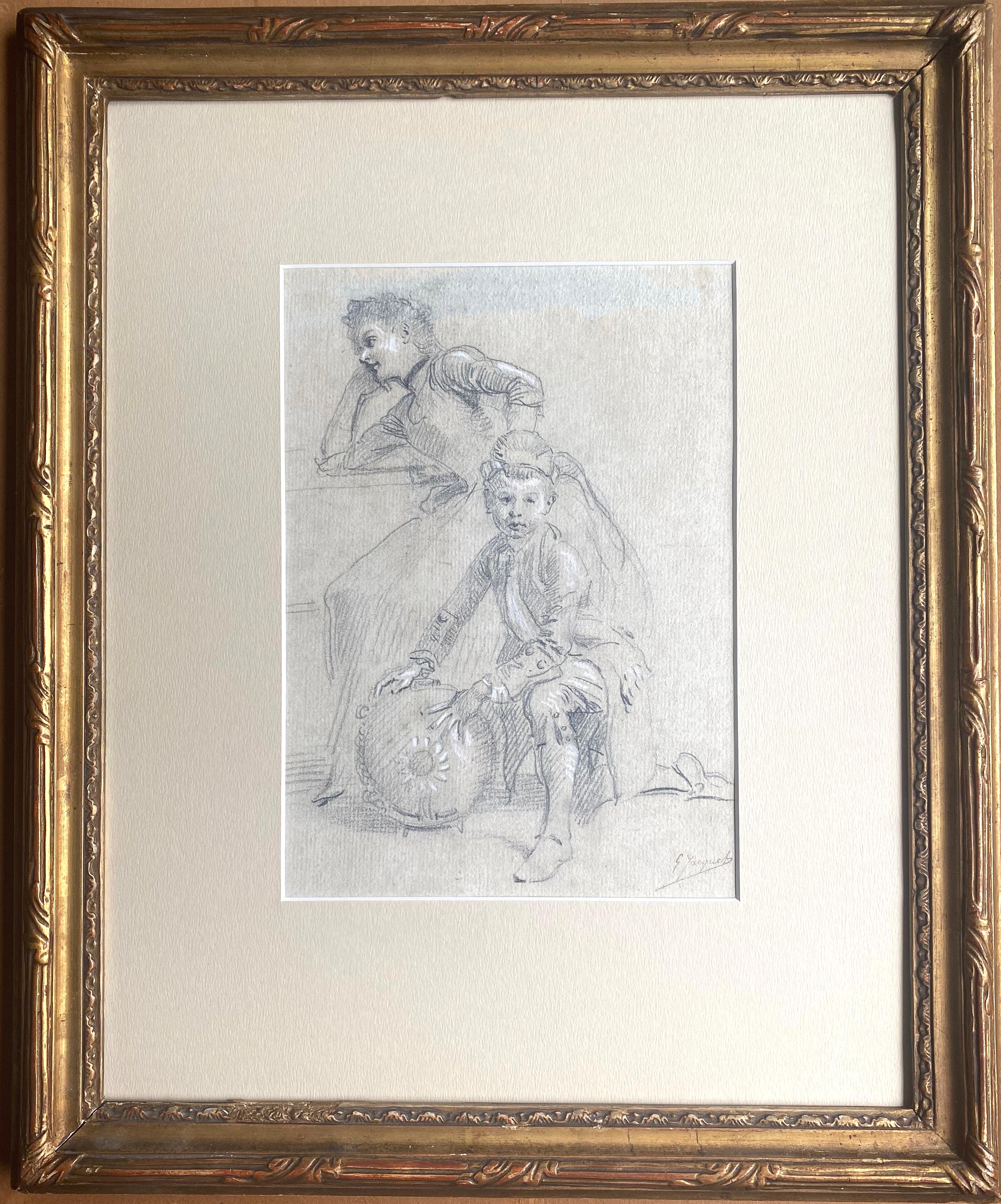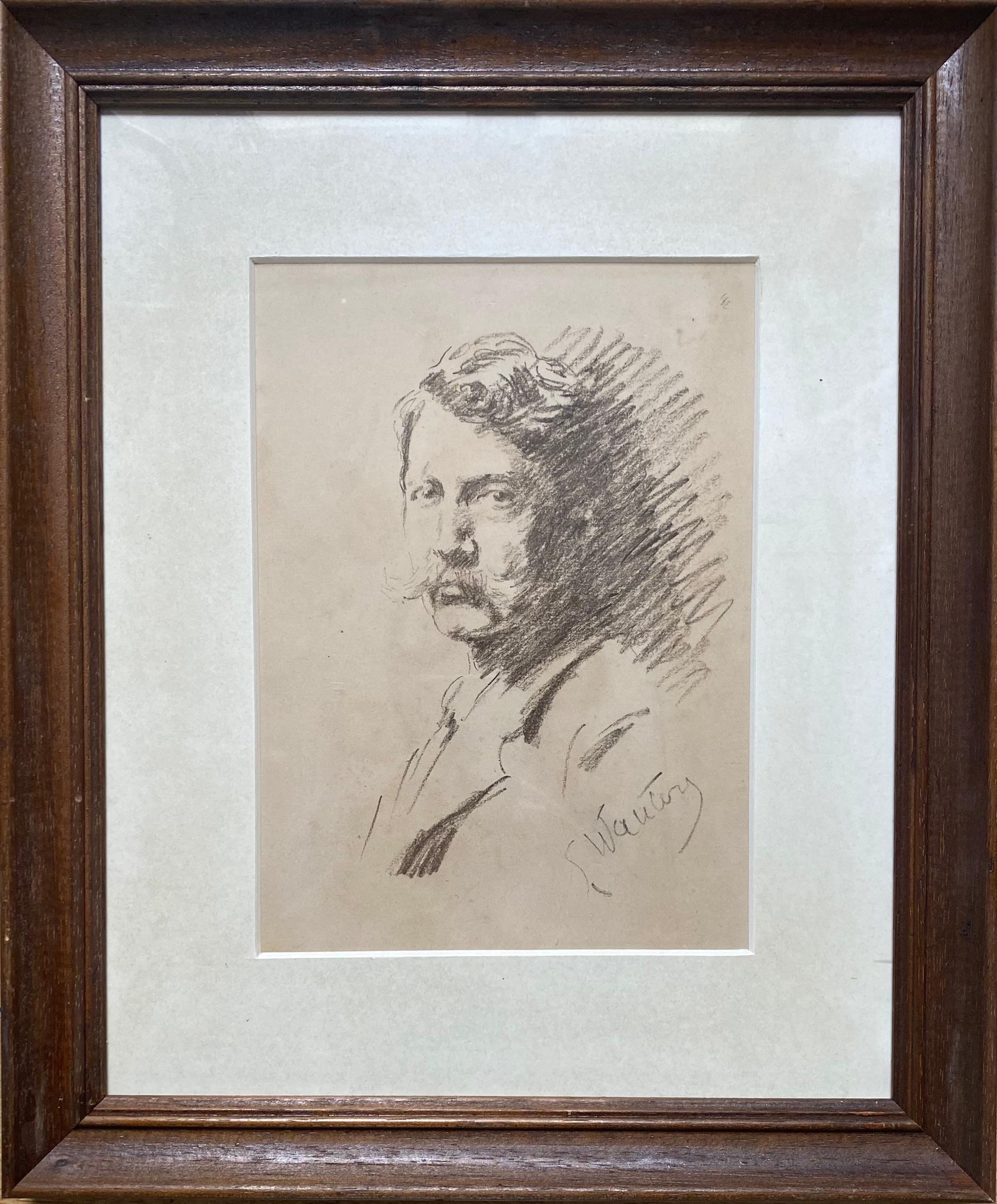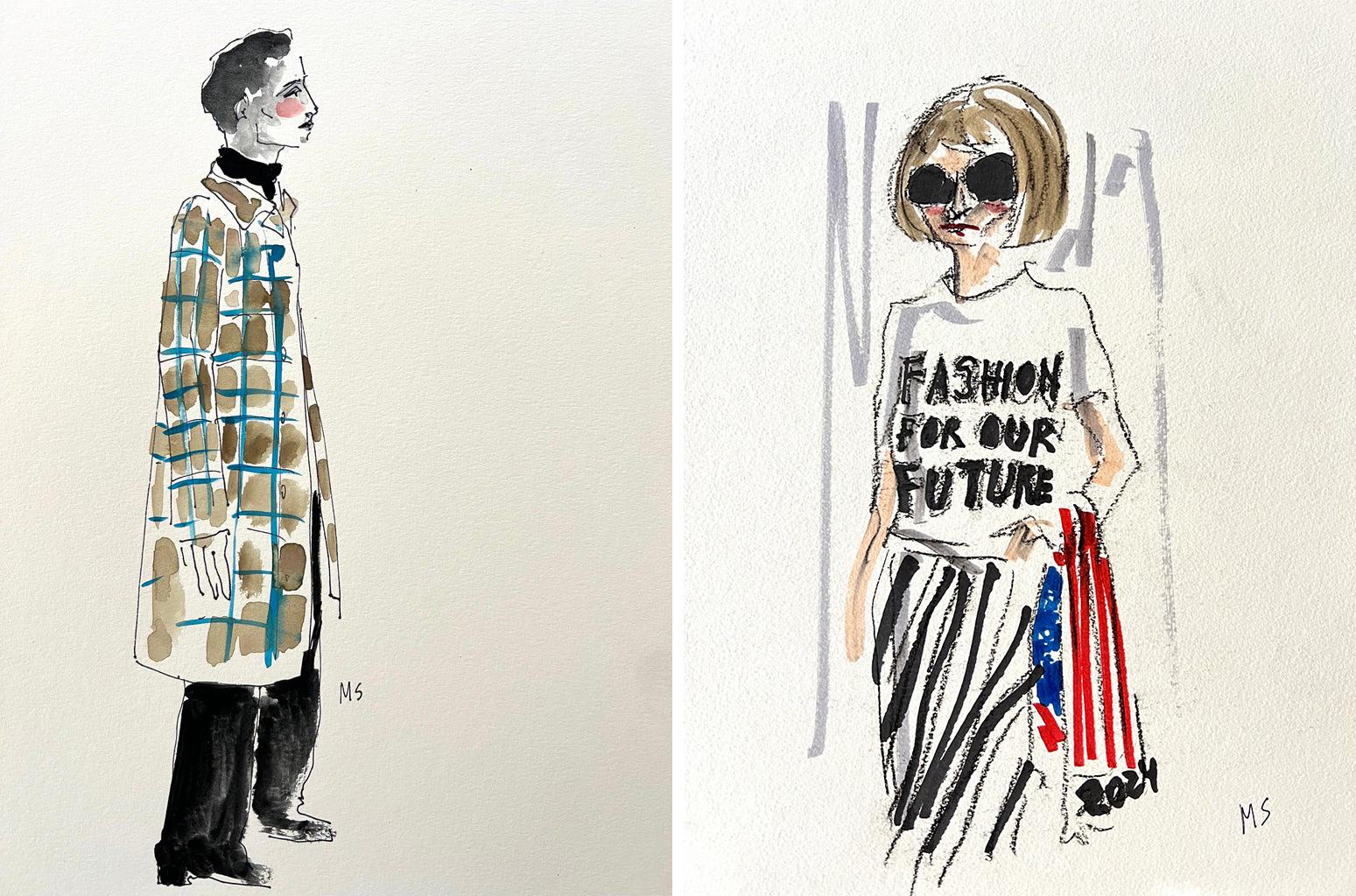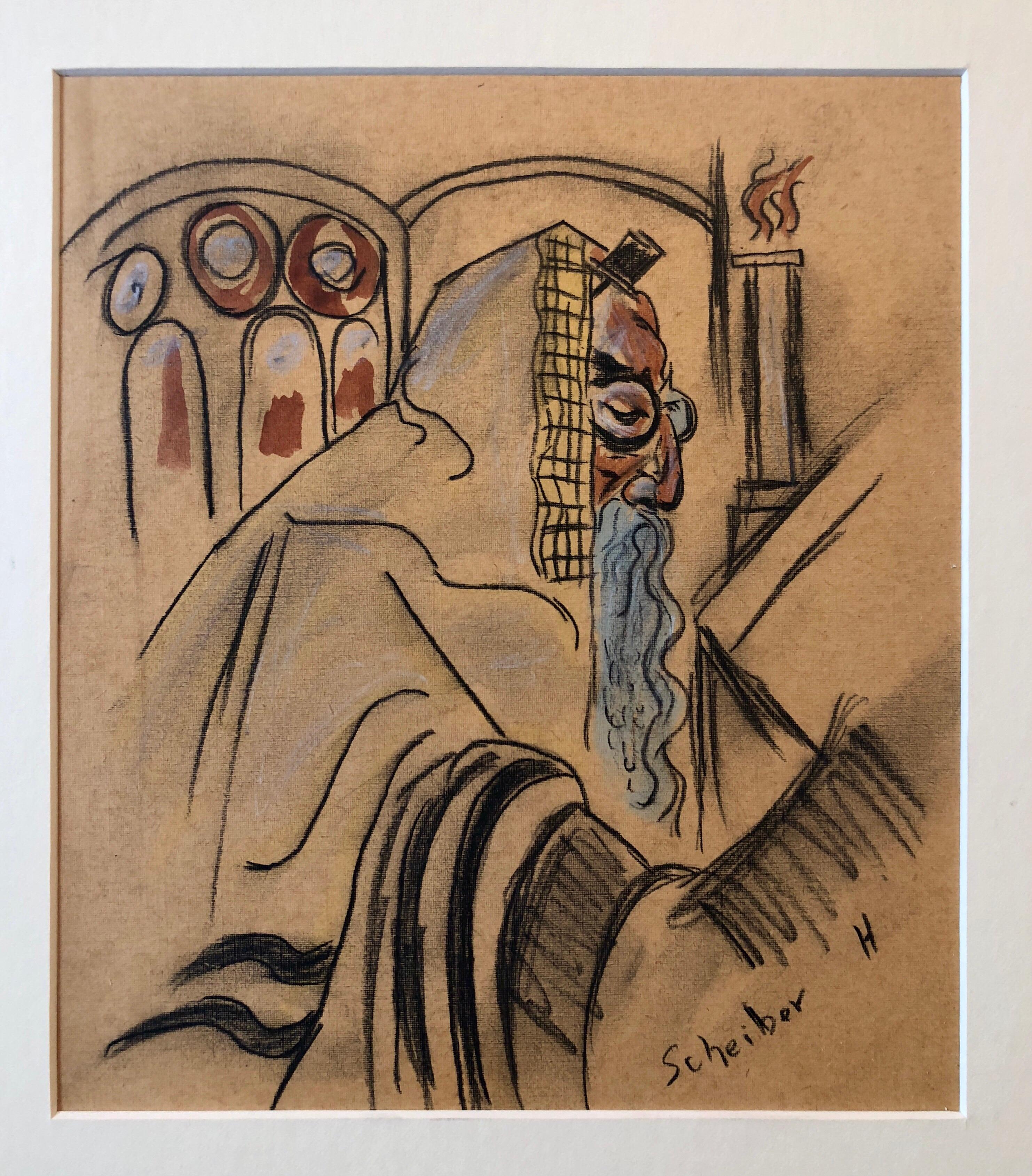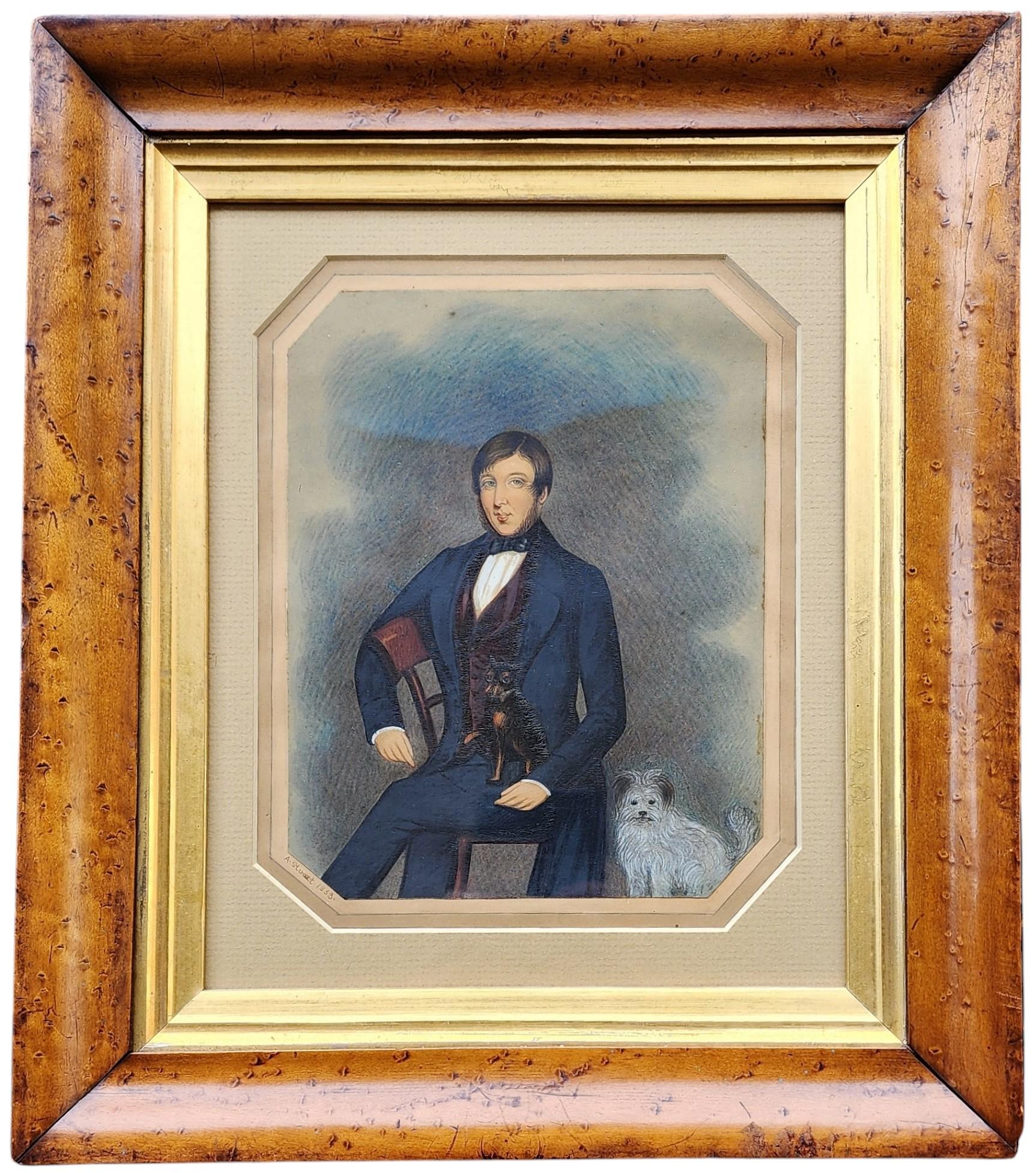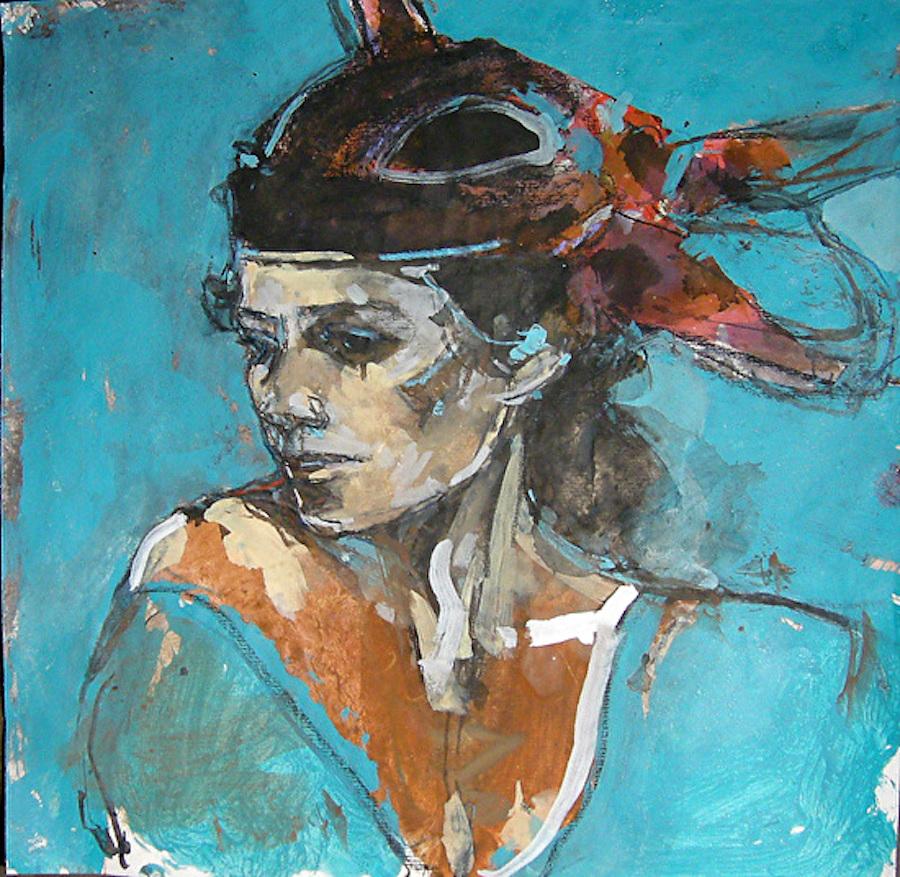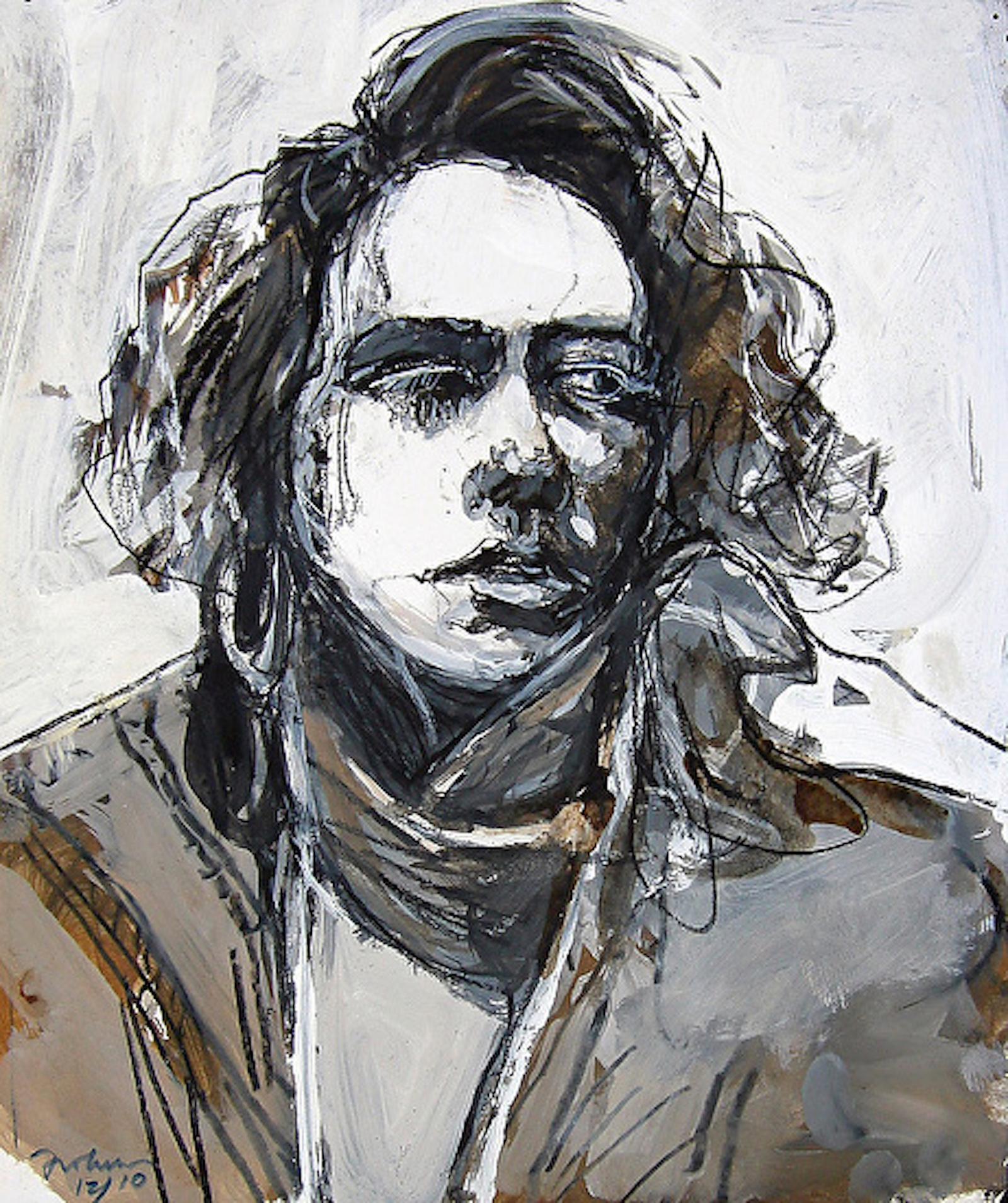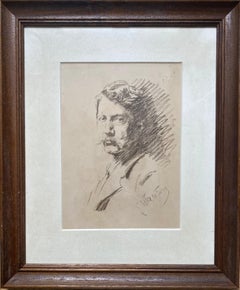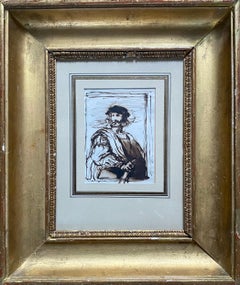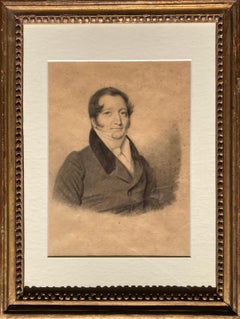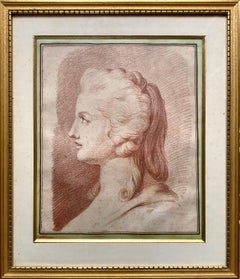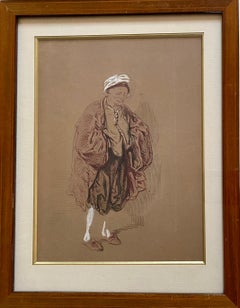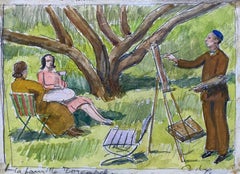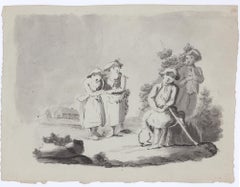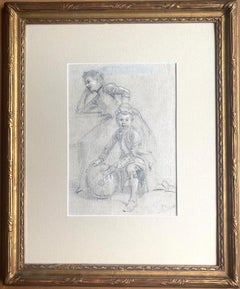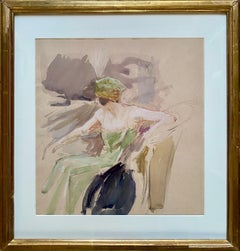
Study Of Seated Woman
View Similar Items
Want more images or videos?
Request additional images or videos from the seller
1 of 10
Henri RoyerStudy Of Seated WomanCirca 1910
Circa 1910
About the Item
- Creator:Henri Royer (1869 - 1938, French)
- Creation Year:Circa 1910
- Dimensions:Height: 13.39 in (34 cm)Width: 12.21 in (31 cm)
- Medium:
- Movement & Style:
- Period:
- Condition:
- Gallery Location:PARIS, FR
- Reference Number:1stDibs: LU2709214333132
About the Seller
5.0
Vetted Professional Seller
Every seller passes strict standards for authenticity and reliability
1stDibs seller since 2024
5 sales on 1stDibs
Typical response time: 1 hour
Authenticity Guarantee
In the unlikely event there’s an issue with an item’s authenticity, contact us within 1 year for a full refund. DetailsMoney-Back Guarantee
If your item is not as described, is damaged in transit, or does not arrive, contact us within 7 days for a full refund. Details24-Hour Cancellation
You have a 24-hour grace period in which to reconsider your purchase, with no questions asked.Vetted Professional Sellers
Our world-class sellers must adhere to strict standards for service and quality, maintaining the integrity of our listings.Price-Match Guarantee
If you find that a seller listed the same item for a lower price elsewhere, we’ll match it.Trusted Global Delivery
Our best-in-class carrier network provides specialized shipping options worldwide, including custom delivery.More From This Seller
View AllAutoportrait
Located in PARIS, FR
Emile WAUTERS
Bruxelles 1846 - Paris 1933
Autoportrait
Vers 1880-1890
Fusain sur papier fort
Signé en bas à droite
24 x 17 cm feuille
39 x 33 cm cadre
Petites tâches peu visibles, B...
Category
Late 19th Century French School Portrait Drawings and Watercolors
Materials
Charcoal
Portrait of Condottière
Located in PARIS, FR
Attributed to Léon COGNIET
Paris 1794 -1880
Portrait of Condottière
Pen and brown ink
10,5 x 8cm
30 x 25cm
framed
Period frame
Category
Mid-19th Century French School Portrait Drawings and Watercolors
Materials
Ink, Pen
Jules Boilly (1796-1874) Portrait Of A Man, Black chalk
Located in PARIS, FR
Julien Leopold BOILLY
Paris 1796-1874
Portrait of a man
First third of the 19th century
Pierre noire
Signed on the right
23,5 x 17 cm
38 x 29 cm framed
Small stains
Category
Early 19th Century French School Portrait Drawings and Watercolors
Materials
Laid Paper
Bust Of A Woman In Profile, Sanguine On Paper, Signed And Dated
Located in PARIS, FR
Nicolas-André COURTOIS
Paris 1734-1806
Bust of a woman in profile
1791
Sanguine
Signed and dated lower left on the original mount
43.5 x 37 cm framed
19 x 25 cm
Category
Late 18th Century French School Portrait Drawings and Watercolors
Materials
Chalk
Young Elegant Lady In A Hat, Nocturne
By Henry Somm
Located in PARIS, FR
François Clément SOMMIER, known as Henry SOMM
Rouen 1844 - Paris 1907
Young Elegant woman in hat, nocturnal
Watercolor
Signed lower right
32 x 21 cm
50 x 40 cm framed
Very good cond...
Category
Late 19th Century Impressionist Portrait Drawings and Watercolors
Materials
Watercolor
Portrait Of An Indian Soldier, Signed, Large Pastel
By Willem Delsaux
Located in PARIS, FR
Willem DELSAUX
Ixelles 1862 - 1954 Gimbergen
Profile portrait of « Allah Dita »,Indian soldier of the British Indian colonial army
Pastel on p...
Category
Early 20th Century Post-Impressionist Portrait Drawings and Watercolors
Materials
Pastel
You May Also Like
The Hypochondriac: French 19th Century Theatre Comedy drawing
By Paul Gavarni (Guillaume Sulpice Chevalier)
Located in Norwich, GB
A magnificent and sensitively treated line drawing in coloured ink, heightened with white. It depicts Argan, the hypochondriac from Molière's play of the same name. Dating from circa...
Category
Mid-19th Century French School Figurative Drawings and Watercolors
Materials
Paper, Ink, Gouache
Torcapel Family att. to Alexandre Blanchet - Drawing 14x20 cm
By Alexandre Blanchet
Located in Geneva, CH
Watercolor on paper without frame
Category
Early 20th Century French School Portrait Drawings and Watercolors
Materials
Watercolor, Carbon Pencil
$312 Sale Price
20% Off
The Introduction, French School, 18th century
Located in Middletown, NY
In this charming scene a maid appears bashful as she is introduced by her mother to the shepherd’s son.
Ink and wash on hand made, cool-toned cream laid paper, 6 3/4 x 8 7/8 inches...
Category
Mid-18th Century French School Figurative Drawings and Watercolors
Materials
Ink, Watercolor, Handmade Paper, Laid Paper
Woman in thought and Child: the page boy intriguing 19th Century Master drawing
By Gustave Jean Jacquet
Located in Norwich, GB
A virtuoso charcoal sketch by the Frech 19th Century master Gustave Jean Jacquet (1846-1904). It depicts a thoughtful woman (or woman in thought?) with her face resting on her hand...
Category
Late 19th Century French School Figurative Drawings and Watercolors
Materials
Charcoal, Laid Paper
Man in a blue and brown coat and Fashion for our Future, Diptych
By Manuel Santelices
Located in Miami Beach, FL
The artist has covered New York collections for over 16 years and has interviewed, as a journalist, several fashion designers and personalities for different publications. He loves t...
Category
21st Century and Contemporary Contemporary Figurative Drawings and Water...
Materials
Paper, Charcoal, Gouache, Ink, Watercolor
Rare Modernist Hungarian Rabbi Pastel Drawing Gouache Painting Judaica Art Deco
By Hugó Scheiber
Located in Surfside, FL
Rabbi in the synagogue at prayer wearing tallit and tefillin.
Hugó Scheiber (born 29 September 1873 in Budapest – died there 7 March 1950) was a Hungarian modernist painter.
Hugo Scheiber was brought from Budapest to Vienna at the age of eight where his father worked as a sign painter for the Prater Theater. At fifteen, he returned with his family to Budapest and began working during the day to help support them and attending painting classes at the School of Design in the evening, where Henrik Papp was one of his teachers. He completed his studies in 1900. His work was at first in a post-Impressionistic style but from 1910 onward showed his increasing interest in German Expressionism and Futurism. This made it of little interest to the conservative Hungarian art establishment.
However, in 1915 he met the great Italian avant-gardist Filippo Tommaso Marinetti and the two painters became close friends. Marinetti invited him to join the Futurist Movement. The uniquely modernist style that he developed was, however, closer to German Expressionism than to Futurism and eventually drifted toward an international art deco manner similar to Erté's. In 1919, he and his friend Béla Kádar held an exhibition at the Hevesy Salon in Vienna. It was a great success and at last caused the Budapest Art Museum to acquire some of Scheiber's drawings. Encouraged, Scheiber came back to live in Vienna in 1920.
A turning point in Scheiber's career came a year later, when Herwarth Walden, founder of Germany's leading avant-garde periodical, Der Sturm, and of the Sturm Gallery in Berlin, became interested in Scheiber's work. Scheiber moved to Berlin in 1922, and his paintings soon appeared regularly in Walden's magazine and elsewhere. Exhibitions of his work followed in London, Rome, La Paz, and New York.
Scheiber's move to Germany coincided with a significant exodus of Hungarian artists to Berlin, including Laszlo Moholy-Nagy and Sandor Bortnyik. There had been a major split in ideology among the Hungarian avant-garde. The Constructivist and leader of the Hungarian avantgarde, Lajos Kassák (painted by Hugó Scheiber in 1930) believed that art should relate to all the needs of contemporary humankind. Thus he refused to compromise the purity of his style to reflect the demands of either the ruling class or socialists and communists. The other camp believed that an artist should be a figurehead for social and political change.
The fall out and factions that resulted from this politicisation resulted in most of the Hungarian avant gardists leaving Vienna for Berlin. Hungarian émigrés made up one of the largest minority groups in the German capital and the influx of their painters had a significant effect on Hungarian and international art. Another turning point of Scheiber's career came in 1926, with the New York exhibition of the Société Anonyme, organized by Katherine Dreier. Scheiber and other important avant garde artists from more than twenty-three countries were represented. In 1933, Scheiber was invited by Marinetti to participate in the great meeting of the Futurists held in Rome in late April 1933, Mostra Nazionale d’Arte Futurista where he was received with great enthusiasm. Gradually, the Hungarian artists began to return home, particularly with the rise of Nazism in Germany. Kádar went back from Berlin in about 1932 and Scheiber followed in 1934.
He was then at the peak of his powers and had a special flair in depicting café and cabaret life in vivid colors, sturdily abstracted forms and spontaneous brush strokes. Scheiber depicted cosmopolitan modern life using stylized shapes and expressive colors. His preferred subjects were cabaret and street scenes, jazz musicians, flappers, and a series of self-portraits (usually with a cigar). his principal media being gouache and oil. He was a member of the prestigious New Society of Artists (KUT—Képzőművészek Új Társasága)and seems to have weathered Hungary's post–World War II transition to state-communism without difficulty. He continued to be well regarded, eventually even receiving the posthumous honor of having one of his images used for a Russian Soviet postage stamp (see image above). Hugó Scheiber died in Budapest in 1950.
Paintings by Hugó Scheiber form part of permanent museum collections in Budapest (Hungarian National Museum), Pecs (Jannus Pannonius Museum), Vienna, New York, Bern and elsewhere. His work has also been shown in many important exhibitions, including:
"The Nell Walden Collection," Kunsthaus Zürich (1945)
"Collection of the Société Anonyme," Yale University Art Gallery, New Haven, Connecticut (1950)
"Hugó Scheiber: A Commemorative Exhibition," Hungarian National Museum, Budapest (1964)
"Ungarische Avantgarde," Galleria del Levante, Munich (1971)
"Paris-Berlin 1900-1930," Centre Georges Pompidou, Paris (1978)
"L’Art en Hongrie, 1905-1920," Musée d’Art et l’Industrie, Saint-Etienne (1980)
"Ungarische Avantgarde in der Weimarer Republik," Marburg (1986)
"Modernizmus," Eresz & Maklary Gallery, Budapest (2006)
"Hugó Scheiber & Béla Kádár," Galerie le Minotaure, Paris and Tel Aviv (2007)
Hugó Scheiber's paintings continue to be regularly sold at Sotheby's, Christie's, Gillen's Arts (London), Papillon Gallery (Los Angeles) and other auction houses.
He was included in the exhibition The Art Of Modern Hungary 1931 and other exhibitions along with Vilmos Novak Aba, Count Julius Batthyany, Pal Bor, Bela Buky, Denes Csanky, Istvan Csok, Bela Czobel, Peter Di Gabor, Bela Ivanyi Grunwald, Baron Ferenc Hatvany, Lipot Herman, Odon Marffy, C. Pal Molnar...
Category
Early 20th Century Modern Figurative Paintings
Materials
Paper, Charcoal, Pastel, Watercolor, Gouache
Recently Viewed
View AllMore Ways To Browse
Henri Royer
Emile Friant
Female Artists Painting
Slim Aarons Estate
Los Angeles City Art
High School Painting
Old Portraits
Geometric Print
San Francisco Contemporary
Slim Aarons Estate Print
Oil Art Of Interiors
Oil Painting Unknown
Garden Sign
Tree Of Life Art
Japanese Into
Large Blue Painting
Mexican Artist Painting
Contemporary Oil Paintings Of New York
